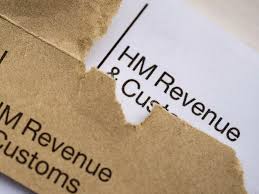In the intricate realm of taxation, navigating through HM Revenue & Customs (HMRC) tax codes can often feel like deciphering a cryptic language. Every taxpayer is assigned a unique tax code by HMRC, which serves as a crucial indicator of how much tax should be deducted from their income. However, these alphanumeric codes can be bewildering for many individuals, leaving them uncertain about their tax obligations and entitlements. In this comprehensive guide, we delve deep into the world of HMRC tax codes, unraveling their meanings and shedding light on their significance in the UK tax system.
Unveiling the Mysteries of HMRC Tax Codes
At first glance, HMRC tax codes may appear as a string of random letters and numbers. However, behind this seemingly arbitrary combination lies a structured system designed to accurately calculate an individual’s tax liabilities. The format of a tax code typically consists of several characters, each conveying specific information about the taxpayer’s circumstances. For instance, the most common tax code for individuals under the standard Personal Allowance is 1250L, where ‘L’ signifies the basic tax code for individuals entitled to the standard tax-free Personal Allowance.
Understanding the Components of HMRC Tax Codes
To unravel the complexities of HMRC tax codes, it’s essential to break down their components and understand what each character signifies. The first digit or letter in a tax code represents the amount of income a taxpayer can earn tax-free, known as the Personal Allowance. For example, the ‘1250’ in the tax code 1250L indicates that the taxpayer is entitled to a tax-free income of £12,500 for the tax year. Additionally, certain letters appended to the numerical portion of the tax code convey specific information about the taxpayer’s circumstances.
Deciphering the Alphanumeric Language of Taxation
While understanding the basic structure of HMRC tax codes is crucial, deciphering the nuanced meanings embedded within them requires a deeper dive into tax regulations and guidelines. For instance, the letter ‘M’ in a tax code denotes marriage allowance, indicating that the taxpayer is receiving a transfer of a portion of their spouse’s Personal Allowance. Similarly, the letter ‘T’ signifies that HMRC needs further information to determine the taxpayer’s tax code, often due to multiple sources of income or complex financial arrangements.
Navigating HMRC Tax Codes: Tips and Advice for Taxpayers
As taxpayers endeavor to navigate the intricacies of HMRC tax codes, it’s essential to stay informed and proactive in managing their tax affairs. Here are some practical tips and advice to help individuals better understand and manage their tax codes:
Regularly Check Your Tax Code:
HMRC issues tax codes annually, but changes in personal circumstances or tax regulations can result in updates throughout the year. Therefore, it’s crucial to regularly check your tax code to ensure its accuracy and address any discrepancies promptly.
Seek Professional Advice:
If you’re unsure about your tax code or how it affects your tax obligations, don’t hesitate to seek advice from a qualified tax professional. They can provide personalized guidance based on your individual circumstances and help you optimize your tax position.
Keep HMRC Informed:
If your circumstances change, such as starting a new job, receiving additional income, or getting married, make sure to inform HMRC promptly. Failure to update your details with HMRC could result in incorrect tax codes and potential tax errors.
Utilize Online Resources:
HMRC provides a wealth of online resources and tools to help taxpayers understand their tax codes and manage their tax affairs efficiently. Explore HMRC’s official website for guidance, calculators, and other helpful resources.
Conclusion
In conclusion, HMRC tax codes play a pivotal role in the UK tax system, serving as a crucial tool for calculating individuals’ tax liabilities. While the complexities of tax codes may seem daunting, gaining a clear understanding of their structure and significance can empower taxpayers to navigate the tax landscape with confidence. By staying informed, seeking professional advice when needed, and proactively managing their tax affairs, individuals can ensure compliance with tax regulations and optimize their financial situation.
You read also more
Private Limited Company Advantages and Disadvantages
List of Tax Codes and What They Mean
